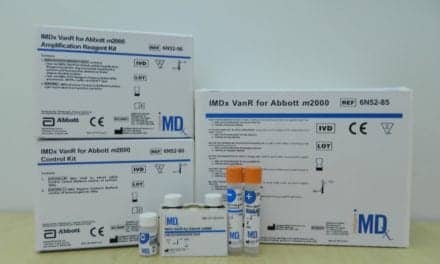Sharp-eyed readers of CLP’s Inside Track column for last month may have had their interest piqued by the comment from Eric B. Compton, MBA, chief operating officer at Hologic Inc, Marlborough, Mass, and newly appointed chairman of industry association AdvaMedDx, that “to help manufacturers and other diagnostic test developers understand and face the challenges of our changing healthcare system, AdvaMedDx has developed a value assessment framework for diagnostic tests that will be rolled out over the next few weeks.”
Prepared with the assistance of Deloitte Consulting and released in the middle of May, the AdvaMedDx publication responds to the difficulties that many manufacturers and laboratories have experienced when discussing the importance of their tests with payors and providers.1,2 “For diagnostics, there are unique challenges associated with demonstrating the value of a test,” noted Compton, “because that value is based on the ability of the test to provide critical information to healthcare decisionmakers, including patients, to guide care and treatment.”
The AdvaMedDx approach describes a number of core principles that should guide the assessment of diagnostic technologies. At the heart of the AdvaMedDx framework are four key ‘value drivers’ that are critical to understanding any assessment of a specific diagnostic technology:
- Clinical impact. The extent of clinical utility and health outcomes associated with the diagnostic technology.
- Nonclinical patient impact. The effects of the technology on nonmedical benefits for the patient (or caregiver), such as patient experience and patient economics (eg, out-of-pocket costs).
- Care delivery revenue and cost impact. The effects of the diagnostic technology on revenues or costs via payor or provider bonuses or penalties associated with care quality metrics, as well as the effects of the technology on the care pathway and other sources of operating efficiency for payors, providers, or other risk-bearing entities.
- Public and population impact. The effects of the diagnostic technology on the healthcare system at large, on employers, or on society as a whole.
Makers and users of lab-developed tests may find it difficult to conduct all of the analyses called for in the new framework, but it’s not likely they will be able to ignore it. The US healthcare system is marching rapidly toward value-based systems of payment, and there will no doubt be rising expectations that all types of diagnostic testing will be measured against the approach outlined in the AdvaMedDx framework. Those that don’t match up may find it increasingly difficult to capture the attention (and dollars) of payors and providers.
References
- A Framework for Comprehensive Assessment of the Value of Diagnostic Tests. Washington, DC: Deloitte Development, 2017. Available at: www.advamed.org/resource-center/framework-comprehensive-assessment-value-diagnostic-tests. Accessed May 31, 2017.
- A Framework for Comprehensive Assessment of Medical Technologies: Defining Value in the New Healthcare Ecosystem. Available at: www.advamed.org/sites/default/files/resource/advamedreport_11v3.pdf. Accessed May 31, 2017.
Steve Halasey
Chief Editor, CLP
[email protected]
(626) 219-0199





